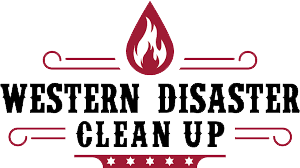Mold clean up is critical for maintaining a healthy home environment. This is especially true in Utah, where varying climatic conditions foster the growth of different mold types.
If you googled “mold removal Utah,” chances are you came across this blog and are wondering what types of molds are common in Utah and how to get rid of them.
You’ve come to the right place. This blog will delve into the most common molds found in Utah homes, such as Aspergillus, Cladosporium, and the notorious Stachybotrys, or black mold. Alongside identifying these prevalent molds, we will provide practical advice on how to effectively prevent their growth.
By understanding the specific challenges these molds pose and implementing targeted prevention strategies, you’ll be able to ensure your home remains safe and free from the harmful effects of mold infestations.
Keep reading to learn everything you need to know about Utah mold removal so you can protect yourself and your family from the dangers of mold.
What is mold?
Mold is a type of fungus consisting of small organisms found virtually everywhere. It can be black, white, orange, green, or purple; you’ll often notice its musty smell before you find it.
Molds play an important role in nature by breaking down dead leaves, plants, and trees. Indoors, mold needs moisture to grow and becomes a problem when it lands on wet surfaces. This often leads to degrading materials and potential health issues for residents.
Mold reproduces by producing spores that are invisible to the naked eye and float through the outdoor and indoor air. These spores land on surfaces and with the right conditions of warmth and moisture, begin to grow into the colonies we recognize as mold. It thrives in humid conditions and grows on a variety of materials including fabrics, paper, wood, glass, and plastic.
A key factor in controlling indoor mold is managing humidity levels and preventing excess moisture through proper ventilation and fixing water leaks promptly. Mold causes health problems such as skin rashes, runny noses, asthma attacks, respiratory issues, and other health issues, especially in those with weakened immune systems.
Common types of mold found in Utah
In Utah, residents commonly encounter several types of mold due to the state’s varied climate, which ranges from dry and arid to wet and snowy. Below are the common mold types found in Utah homes and businesses:
Aspergillus
This mold species is prevalent in many environments, notably on food and within air conditioning systems, where it likes stagnant air and dust.
Aspergillus is known for its potential to cause asthma, lung conditions, and systemic fungal infections, which are particularly dangerous for individuals with weakened immune systems. Regular HVAC maintenance and proper food storage will help prevent its growth.
Cladosporium
Unlike many molds that prefer warm, moist environments, Cladosporium thrives in both warm and cold conditions, making it a common issue in all seasons. It typically colonizes fabrics and wood surfaces, where it can be seen as a velvet-like texture.
While it is less toxic than some molds, Cladosporium can trigger skin rashes, sore throats, and respiratory problems, necessitating the maintenance of dry indoor environments and the use of dehumidifiers where necessary.

Stachybotrys chartarum
Commonly known as “Black Mold,” this type has a notorious reputation because of its potential toxicity and health risks. It prefers areas of high humidity and persistent moisture, such as water-damaged buildings, where it might grow on cellulose-rich materials like drywall.
Stachybotrys produces toxins that cause severe reactions in humans, including respiratory issues like asthma attacks, and in some cases, lead to chronic health problems. Ensuring that your home is free of water leaks and well-ventilated will help prevent the growth of this harmful mold.
Penicillium
Often found in insulation, water-damaged furniture, and old furnishings, Penicillium spreads quickly through the air indoors. It typically appears as a blue or green mold with a velvety texture and produces allergens that may cause symptoms like sneezing, runny noses, and itchy eyes. Long-term exposure sometimes leads to more serious respiratory conditions.
Regularly inspecting household areas that are prone to moisture accumulation and immediately cleaning up water damage are effective strategies to control its spread.
Alternaria
This mold is most commonly found in damp areas such as showers, bathtubs, and around leaky sinks. Alternaria is known to cause allergic reactions, particularly in individuals with existing respiratory conditions or weakened immune systems.
Symptoms include allergic responses similar to hay fever, such as sneezing, watery eyes, and skin irritation. To prevent Alternaria mold, it is essential to maintain a clean, dry, and well-ventilated bathroom and kitchen environment.
These molds thrive in humid conditions and anywhere with excess moisture, such as around leaky pipes and within air ducts. Mold prevention in Utah homes involves controlling humidity levels, fixing water leaks promptly, and ensuring proper ventilation.
Prevention tips for Utah homes
- Keep humidity levels low: Aim for indoor humidity levels below 45% by using dehumidifiers or air conditioners.
- Ventilate well: Ensure bathrooms, kitchens, and laundry rooms have proper ventilation to prevent excess moisture.
- Repair water promptly: Fix water leaks and leaky pipes immediately to prevent water from accumulating.
- Clean regularly: Conduct mold clean up activities frequently in moisture-prone areas with mold-resistant products.
- Inspect air ducts: Clean air ducts periodically to ensure they aren’t contributing to indoor mold issues.
- Dry out wet areas: After any water spillage or flooding, dry the area within 24-48 hours to prevent mold growth.
By being proactive and diligently maintaining your living spaces, you’ll greatly reduce the risk of unwanted mold infiltration in your Utah home.

Professional mold remediation
Professional mold remediation is great for effectively dealing with mold infestations in homes or businesses. However, if you’ve never dealt with Utah mold removal, you might not know what to expect. That’s what this section is all about.
The mold removal process involves a series of steps aimed at identifying, containing, and removing mold and preventing future growth. Mold remediation specialists use advanced tools and techniques to ensure a thorough clean-up.
Steps in professional mold remediation
- Inspection and assessment: Technicians assess the extent of mold growth and identify the mold types present.
- Containment: The affected area is isolated using physical barriers and negative air pressure to prevent the spread of spores.
- Air filtration: HEPA filters are used to clean the air of mold spores and other contaminants.
- Removal and clean-up: Depending on the severity of the mold damage, professionals remove or treat infected materials and clean the area with antimicrobial and antifungal treatments.
- Sanitization: Professionals sanitize affected items and deodorize the area to eliminate odors.
- Restoration: Repair and reconstruction may be involved to return the property to its original condition.
The goal of professional mold remediation is to remove existing mold, ensure the safety of occupants, and safeguard the property from future mold-related issues. Proper remediation will help maintain the integrity of the structure and the health of those within it.
Utah mold removal with Western Disaster Cleanup
If you suspect mold growth in your home, it’s important to address it promptly to maintain a healthy living environment and prevent further damage. If you Googled “mold removal Utah” and found yourself here, see it as a sign to call us! Western Disaster Cleanup is your go-to expert for professional mold clean up and removal.
The Western Disaster Cleanup team has the latest technology and extensive knowledge to effectively identify, treat, and eliminate mold from your property, ensuring a thorough and safe resolution to your mold concerns.
Don’t let mold compromise your home’s safety or your family’s health. Trust the professionals at Western Disaster Cleanup to provide reliable and efficient service that gets to the root of the problem. We understand the challenges that mold presents, and we’re here to help you every step of the way with solutions tailored to your specific needs.
Call Western Disaster Cleanup today for a consultation, and take the first step toward a healthier, mold-free home. Let us help you restore your peace of mind with our expert Utah mold removal services.

